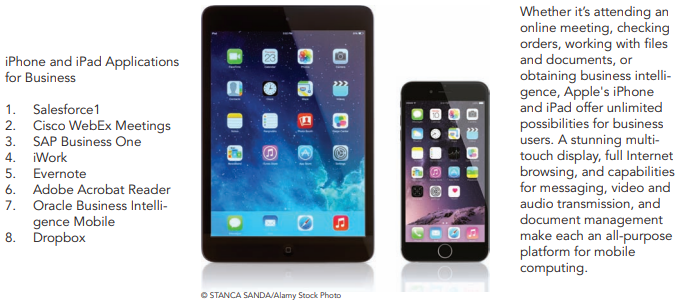Completion requirements
View
Discussion Topic- "How are information systems transforming global business and why are they so essential for running and managing a business today?"
What’s New in Management Information Systems?

Plenty. In fact, there’s a whole new world of doing business using new technologies for managing and organizing. What makes the MIS field the most exciting area of study in schools of business is the continuous change in technology, management, and business processes. Five changes are of paramount importance.
- IT Innovations. A continuing stream of information technology innovations is transforming the traditional business world. Examples include the emergence of cloud computing, the growth of a mobile digital business platform based on smartphones and tablet computers, big data, business analytics, and the use of social networks by managers to achieve business objectives. Most of these changes have occurred in the past few years. These innovations are enabling entrepreneurs and innovative traditional firms to create new products and services, develop new business models, and transform the day-to-day conduct of business. In the process, some old businesses, even industries, are being destroyed while new businesses are springing up.
- New Business Models. For instance, the emergence of online video services like Netfl ix for streaming, Apple iTunes, Amazon, and many others for
downloading video has forever changed how premium video is distributed
and even created. Netfl ix in 2016 attracted more than 75 million subscribers
worldwide to what it calls the “Internet TV” revolution. Netfl ix has moved
into premium TV show production with 30 original shows such as House of
Cards and Orange Is the New Black, challenging cable and broadcast producers of TV shows, and potentially disrupting cable network dominance of TV
show production. Apple’s iTunes now accounts for 67 percent of movie and
TV show downloads and has struck deals with major Hollywood studios for
recent movies and TV shows. A growing trickle of viewers is unplugging
from cable and using only the Internet for entertainment.
- E-commerce Expanding. E-commerce generated about $600 billion in
revenues in 2016 and is estimated to grow to nearly $900 billion by 2020.
E-commerce is changing how firms design, produce and deliver their products and services. E-commerce has reinvented itself again, disrupting the
traditional marketing and advertising industry and putting major media and
content firms in jeopardy. Facebook and other social networking sites such
as YouTube, Twitter, and Tumblr along with Netfl ix, Apple Beats music service, and many other media firms exemplify the new face of e-commerce in
the twenty-first century. They sell services. When we think of e-commerce,
we tend to think of selling physical products. While this iconic vision of
e-commerce is still very powerful and the fastest-growing form of retail in
the United States, growing up alongside is a whole new value stream based
on selling services, not goods. It’s a services model of e-commerce. Growth
in social commerce is spurred by the powerful growth of the mobile platform:
80 percent of Facebook’s users access the service from mobile phones and
tablets. Information systems and technologies are the foundation of this new
services-based e-commerce. Mobile e-commerce hit $130 billion in 2016 and
is growing at more than 30 percent a year.
- Management Changes. The management of business firms has changed: With
new mobile smartphones, high-speed wireless Wi-Fi networks, and tablets,
remote salespeople on the road are only seconds away from their managers’
questions and oversight. Business is going mobile, along with consumers. Managers on the move are indirect, continuous contact with their employees. The
growth of enterprise-wide information systems with extraordinarily rich data
means that managers no longer operate in a fog of confusion but instead have
online, nearly instant access to the really important information they need for
accurate and timely decisions. In addition to their public uses on the web, wikis, and blogs are becoming important corporate tools for communication, collaboration, and information sharing.
- Changes in Firms and Organizations. Compared to industrial organizations
of the previous century, new fast-growing twenty-first-century business firms
put less emphasis on hierarchy and structure and more emphasis on employees taking on multiple roles and tasks and collaborating with others on a team.
They put greater emphasis on competency and skills rather than position in the
hierarchy. They emphasize higher speed and more accurate decision making
based on data and analysis. They are more aware of changes in technology, consumer attitudes, and culture. They use social media to enter into conversations
with consumers and demonstrate a greater willingness to listen to consumers,
in part because they have no choice. They show a better understanding of the
importance of information technology in creating and managing business firms
and other organizations. To the extent organizations and business, firms demonstrate these characteristics, they are twenty-first-century digital firms.

